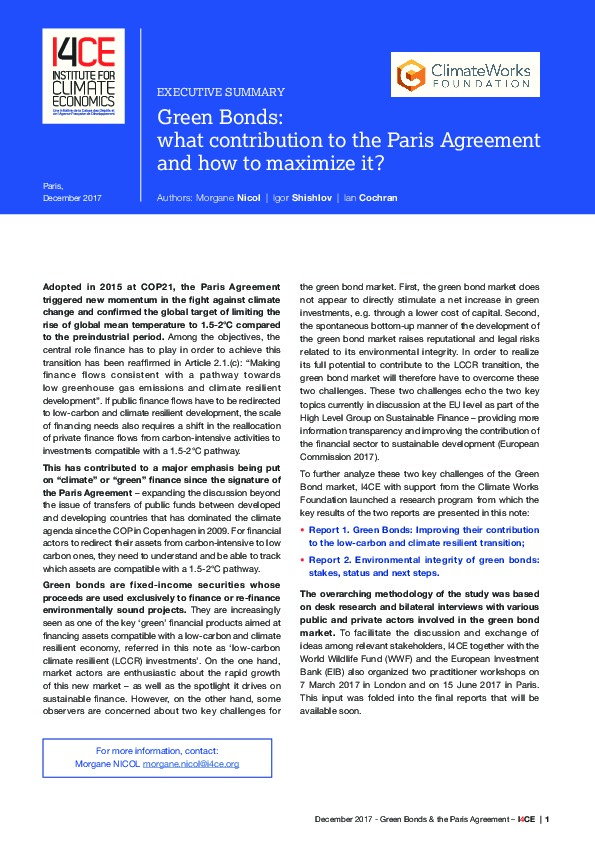Green Bonds: what contribution to the Paris Agreement and how to maximize it?
Adopted in 2015 at COP21, the Paris Agreement triggered new momentum in the fight against climate change and confirmed the global target of limiting the rise of global mean temperature to 1.5-2°C compared to the preindustrial period. Among the objectives, the central role finance has to play in order to achieve this transition has been reaffirmed in Article 2.1.(c): “Making finance flows consistent with a pathway towards low greenhouse gas emissions and climate resilient development”.
Green bonds are increasingly seen as of one of the key ‘green’ financial products aimed at financing assets compatible with a low-carbon and climate resilient economy, referred in this note as ‘lowcarbon climate resilient (LCCR) investments’. On the one hand, market actors are enthusiastic about the rapid growth of this new market – as well as the spotlight it drives on sustainable finance.
However, on the other hand, some observers are concerned about two key challenges for the green bond market. First, the green bond market does not appear to directly stimulate a net increase in green investments, e.g. through a lower cost of capital. Second, the spontaneous bottom-up manner of the development of the green bond market raises reputational and legal risks related to its environmental integrity.
In order to realize its full potential to contribute to the LCCR transition, the green bond market will therefore have to overcome these two challenges.
This report summarizes the principal findings of the research I4CE has conducted to further analyze these two key challenges with the support from the Climate Works Foundation. The two final reports for the program will be published later this year / early 2018.
- Report 1. Green Bonds: Improving their contribution to the low-carbon and climate resilient transition;
- Report 2. Environmental integrity of green bonds: stakes, status and next steps.
A short version of this report is available in Spanish online here and in a pdf here.
